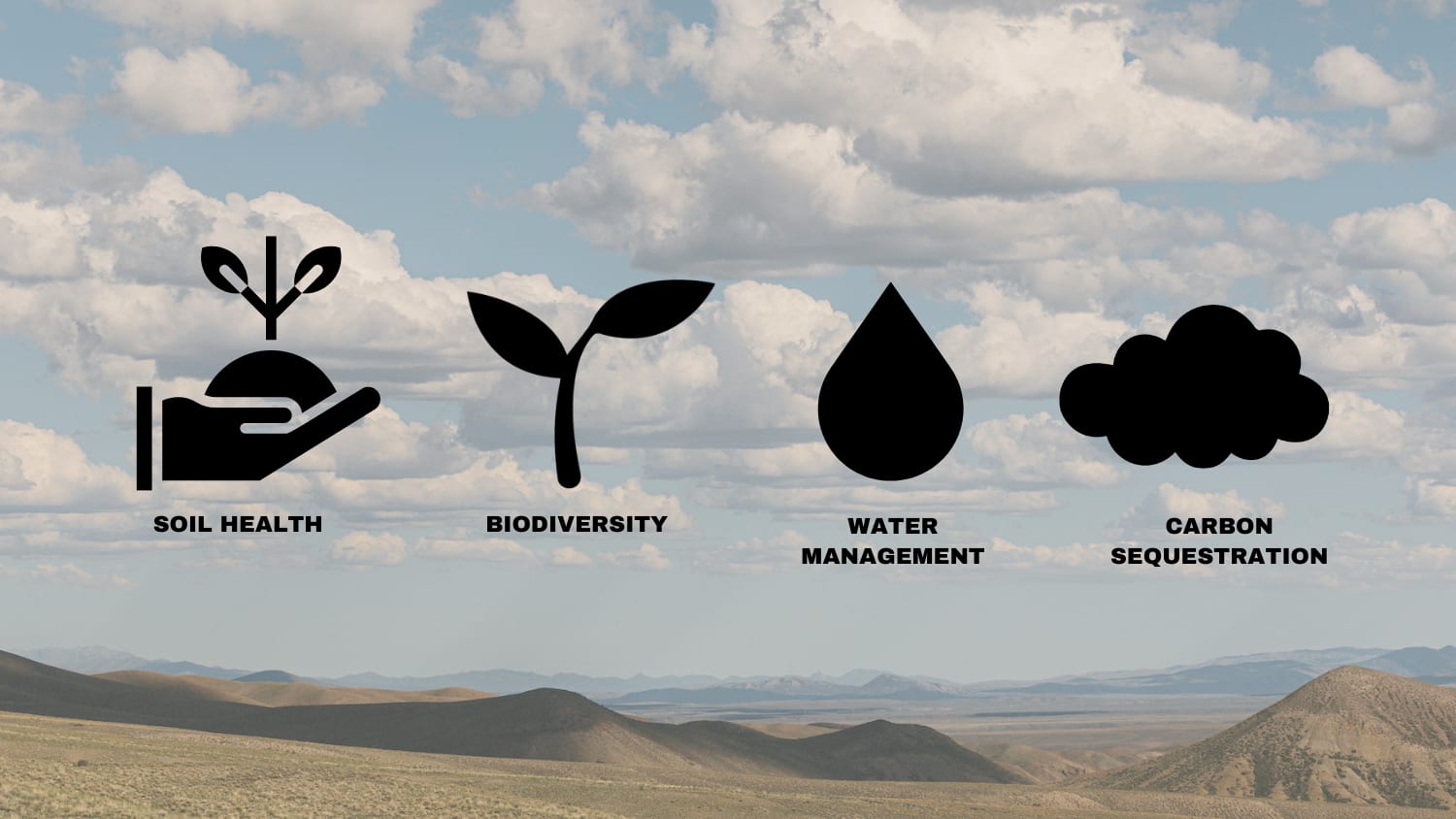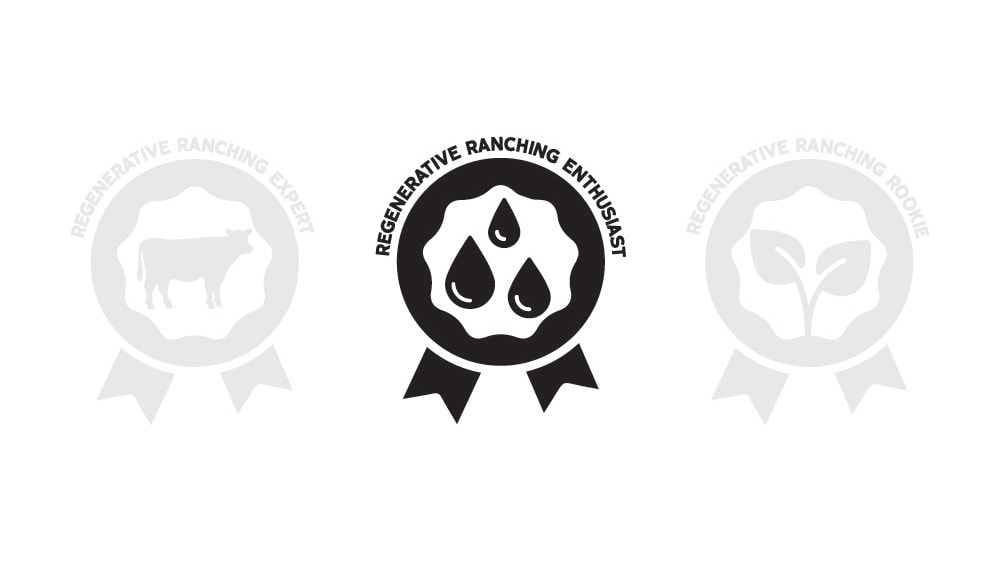
Dig into Regenerative Ranching! Take Our Quiz to Test Your Knowledge
From grazing principles to animal health to water and soil best practices, there’s a lot to learn—and know—about regenerative ranching. Whether your passion is food, climate, or thriving communities, take our quiz to test your knowledge!
Despite its abundance, water is our planet's most limited natural resource. Less than 1% of the Earth’s freshwater is available for human use. This freshwater is essential for drinking, industry, and agriculture. Regenerative ranching supports healthy water cycles so that water can efficiently enter the soil and stay there!
"Pasture-raised" refers to livestock raised primarily on pasture, where they can graze on grass and other forage. This method allows the animals time to roam freely in a natural environment, as opposed to being mainly confined in feedlots or indoor facilities.
With rotational grazing, livestock are frequently moved to help prevent overgrazing and allow plants to recover. It’s great land stewardship benefiting both animals and land! Rotational grazing promotes soil health, enhances water retention, increases plant diversity and regrowth, and reduces the need for chemical fertilizers and pesticides.
Regenerative ranching best practices call for ecosystem biodiversity, meaning a dynamic mix of native plants, including annual and perennial grasses, forbs and shrubs, and trees. Each rangeland is unique so our Regenerative Ranching Program works individually with each rancher to determine what’s best for their specific rangelands.
Soil helps store carbon through a process called carbon sequestration. Plants absorb carbon dioxide from the air and then send some of it to the soil through their roots. Microorganisms break down the plant’s organic matter, turning it into Soil Organic Carbon (SOC). Regenerative ranching helps retain carbon in the soil, effectively removing it from the atmosphere.
Regenerative ranching practices can significantly increase the amount of carbon stored in soil by improving soil structure and increasing organic matter, leading to greater carbon sequestration. Practices like rotational grazing increase the amount of organic matter in the soil, enhancing its ability to absorb and retain carbon. This reduces greenhouse gas levels, improves soil health, promotes biodiversity, and enhances land resilience.
Ensuring that soil is covered with varied plant species helps protect soil life from heat, rain, and winds. Plants and roots promote diverse microorganisms in the soil and protect them from temperature fluctuations. Ground cover also helps absorb and slow rainwater, which reduces soil erosion and shields topsoil from blowing away in heavy winds!
Tilling the soil involves turning, digging, or stirring dirt – usually to prepare it for crops. Regenerative ranchers sometimes avoid tilling the soil because it disturbs native plants, dries out soil, and reduces healthy microbes in the soil, which the soil needs to store carbon, hold water, and grow healthy native plants.
The benefits of regenerative ranching practices go far beyond just putting good food on the table. By boosting soil health, bringing back biodiversity, and helping the land hold more water and capture carbon, these practices work with nature to heal ecosystems. For people and rural communities, regenerative ranching means stronger local economies, better-paying markets for sustainable products, and more opportunities to care for the land while making a living.
When ranchers practice regenerative agriculture they rotate cattle across pastures to prevent overgrazing, and use natural fertilizers and pest control whenever possible. They plant native plants, promote native birds and insects, and protect water quality. Sustainable Northwest works with ranchers in 11 states to develop goals and plans that improve THEIR rangeland health, measuring progress over 5 years time.
Submit Email

You may be new to the principles and practices of regenerative ranching, but you're off to a great start! You’re curious about sustainable agriculture and interested in learning more about soil health, biodiversity, and ecosystem resilience. Explore this additional resource to deepen your knowledge of regenerative ranching:
Understanding the Basics of Regenerative Agriculture and Soil Health

Seems like you’ve been doing your research! You may already be familiar with the foundational principles and practices of this sustainable approach, but it’s evident you want to learn more. To further enhance your expertise and help advocate for a healthy future for cattle and humans, consider exploring this additional resource:

Seems like you’ve been doing your research! You may already be familiar with the foundational principles and practices of this sustainable approach, but it’s evident you want to learn more. To further enhance your expertise and help advocate for a healthy future for cattle and humans, consider exploring this additional resource:
Rangelands Reimagined: Harnessing Cattle as a Beneficial Land Management Tool